There are few figures in Roman history as well known and reviled as Nero. The emperor supposedly played the fiddle while Rome burned. It’s not clear if he really celebrated the destruction of the city in real time, but he certainly took advantage of the fire. After the embers died down, he used the “new” space left empty by the inferno to build his Domus Aurea – Nero’s Golden Palace.
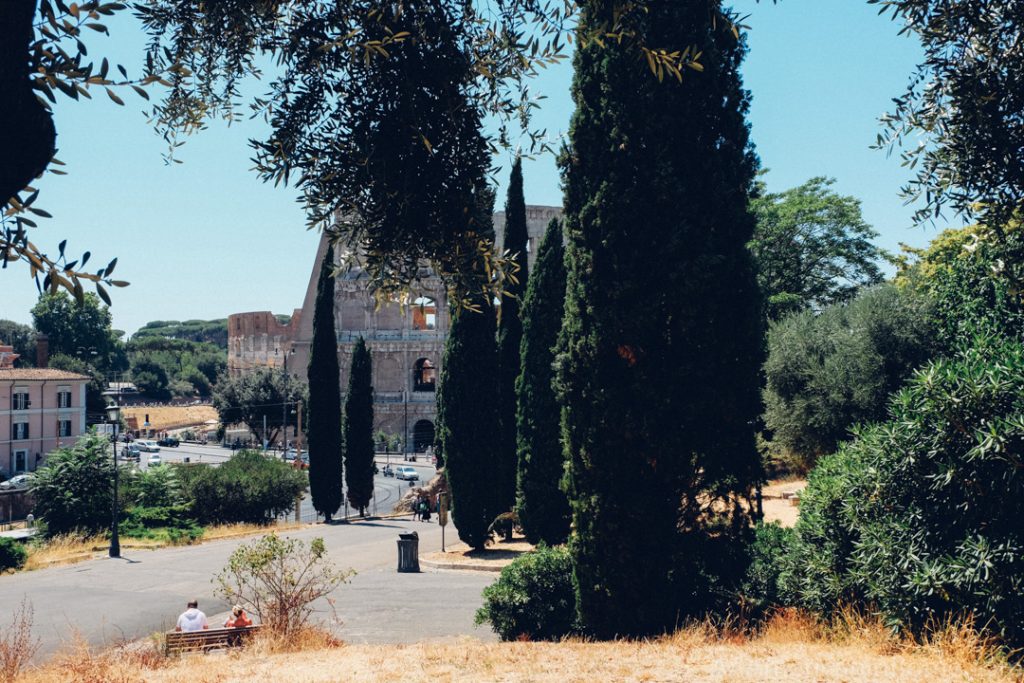
It was probably this lavish display that cemented Nero’s unpopularity. To say that his palace was massive is a bit of an understatement. The Domus Aurea covered somewhere between 100 and 300 acres, reaching from the touching the slopes of the Palatine, Esquiline, Oppian and Caelian hills.
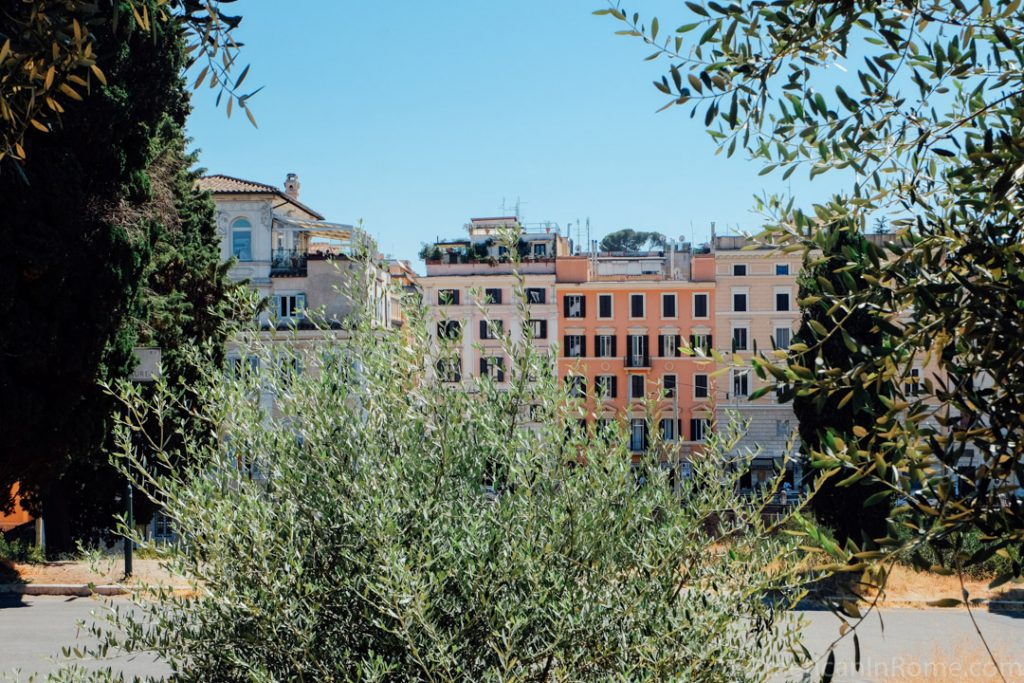
So where is this ginormous palace now?
Most of it lies under Colle Oppio park, looking out at the Colosseum.
Vespasian, the emperor who succeeded Nero, had the palace filled with dirt and destroyed. He then went on to build the Colosseum on top of the artificial lake which Nero had built inside his palace walls.
Buried under Colle Oppio, the Golden Palace was nearly lost – but it is now possible to visit the excavation site.
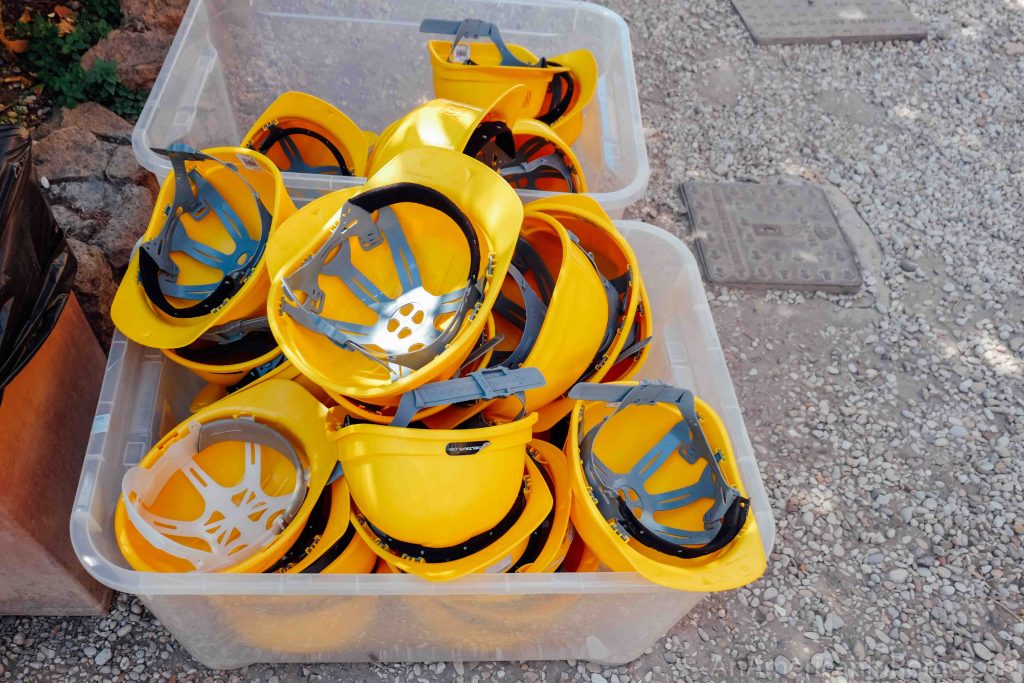
But because there are ongoing excavations taking place, you are going to need a tour (I went with Through Eternity tours) and a hard hat.
We met with our guide, Brandon, to chat about Nero and learn more about his Golden Palace. Prepped and ready to explore, we grabbed our yellow hats and followed an archaeologist into the site.
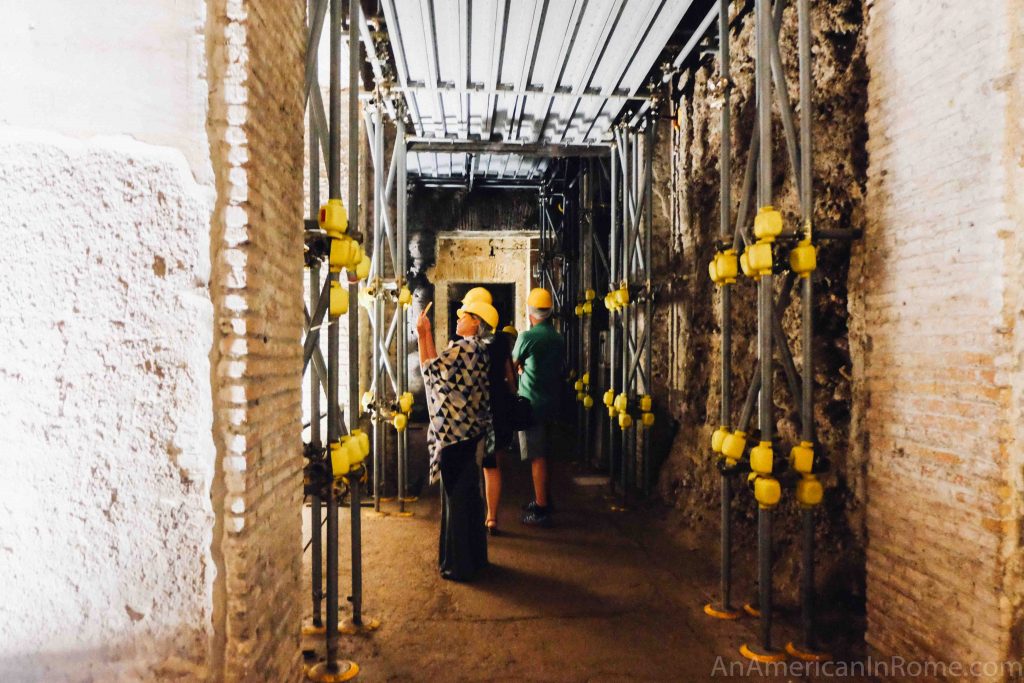
The Domus Aurea is very much an excavation in process. Nero’s Golden Palace was made up of more than 200 rooms, and some have yet to be reopened.
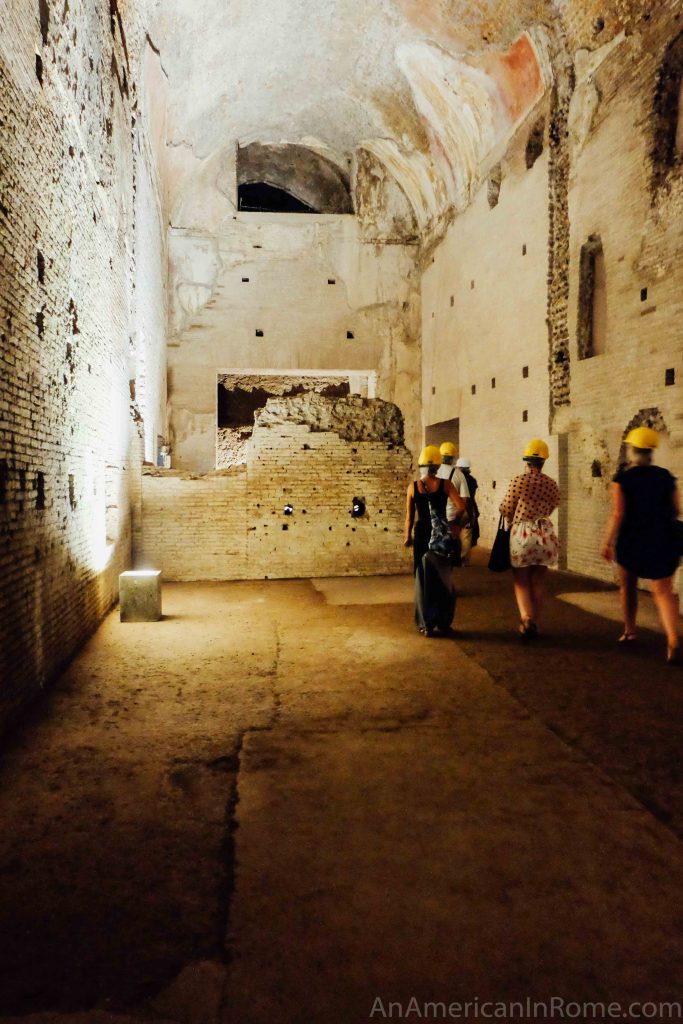
Despite its impressive size, they have yet to find any bedrooms or sleeping quarters – this huge complex was all about entertainment.
In addition to landscaped gardens and a manmade lake, Nero built grottos and dining rooms for his guests to relax in.

He spared no expensive – even decorating the ceilings with mosaics and building an elaborate rotating dome.
Hard to imagine, right?
Which is why part of the reason I loved this visit so much was because:
- I had no idea that the Domus Aurea was right there under the hill.
- There is a virtual reality experience that helps to animate what the Golden Palace would have looked like
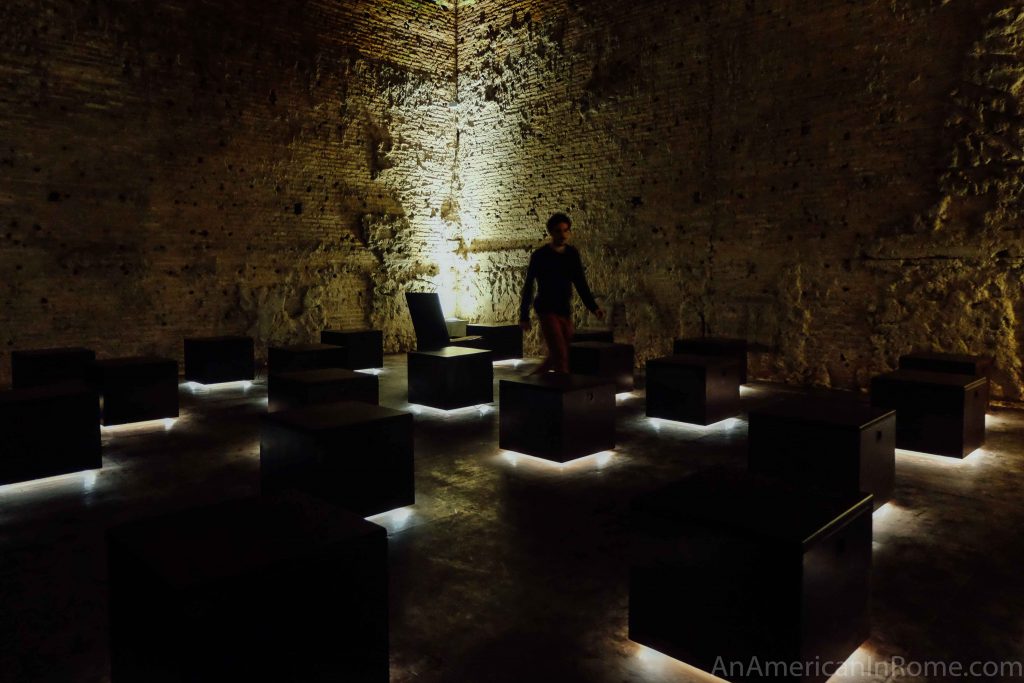
I like Ancient Roman history, but I find it really hard to picture what everything looked like based on the ruins. Having this virtual reality stop was incredibly helpful (and a lot of fun).
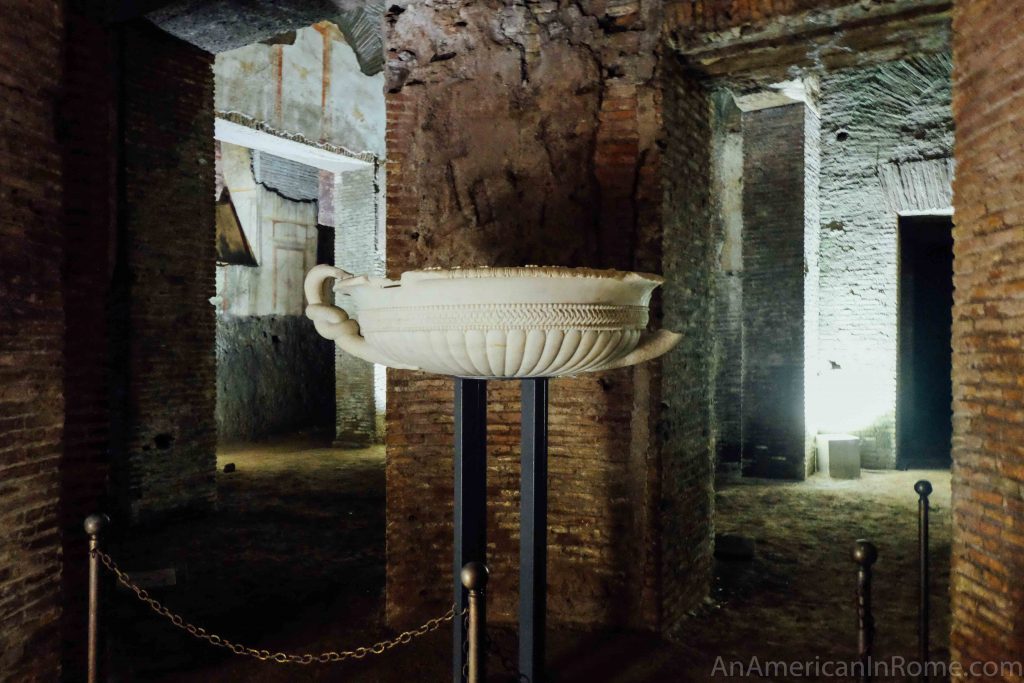
Many of the original decorations from the Golden Palace have been lost or moved to museums, but it is still incredible to wander through the chambers that are now underground.
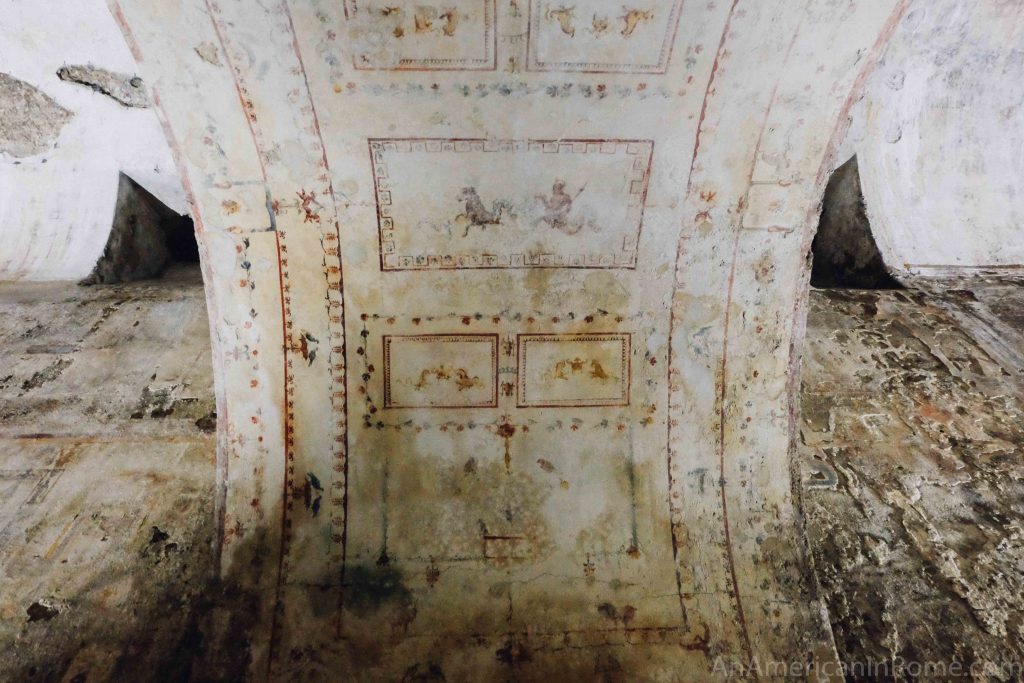
A tour of the Domus Aurea is a great rainy day activity since it is all inside, but a walk through the Golden Palace is also perfect in summer. You might notice in the photos that we are wearing sweaters or draped with scarves – that is because the Domus Aurea is significantly cooler than the outside temperature.
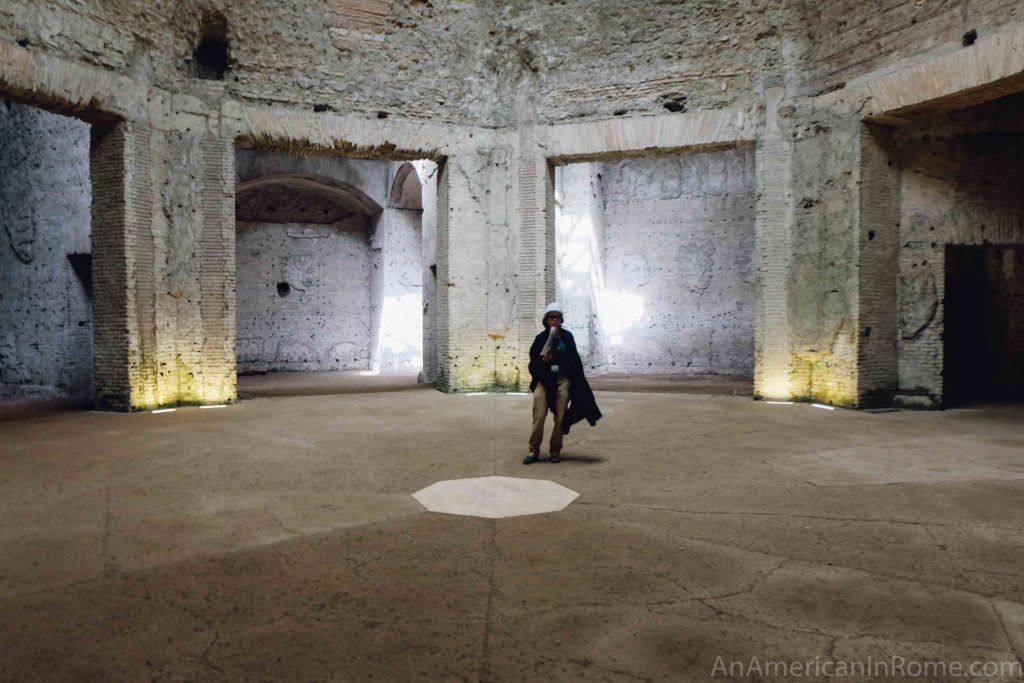
While I loved the virtual reality, my favorite stop was in Nero’s insane octagonal dining room. This is where guests would have been showered with rose petals from the spinning dome above them – much like the rose petals at the Pantheon.

If you have already seen the Colosseum – the Domus Aurea should definitely be your next stop. For the most full-service option, you can book with a company like Through Eternity. You can also buy tickets yourself here and will still be guided by an archeologist once you are inside, or book directly with CoopCulture for the lowest price if there are spots left.
Disclosure: I was invited to join the tour by a friend – but I talk about how much I liked it so often that my husband is now dying to go himself. It is a great experience! This post may contain affiliate links but they represent my honest opinion.

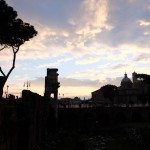

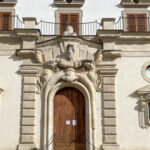

Thank you for sharing your experience and pictures, but please next time leave the history to historians. Even a very brief scan of Nero’s Wikipedia and Encylopedia Brittanica pages would show you how poorly you come across parroting information that has always been known to be salacious gossip.
Nero was not hated. He was beloved. Rome refused to believe he was dead. They created a King Arthur/Christ myth about him that he would return to save Rome. Parthia almost went to war with Vespasian’s son because it refused to say he was dead. They were still laying flowers on his tomb in the 4th century, 300 years after his death. The Collosium got its name because it stood beside Nero’s Collosus. In 700 AD, the Venerable Bede in Britain wrote that, “So long as the Collosus still stands, so shall Rome. When the Collosus falls, so shall Rome and thus the world.” Commodus replaced Nero’s head with his own, but when ge died, Rome put Nero’s head back on. The head was bigger than the Statue of Liberty’s. They stored that giant head just waiting.
Nero gave slaves the right to take abusive masters to court and refused to allow the Senate to pass a law that would give them the right to re-enslave freedmen. He was Rome’s greatest builder and most of his projects were so ambitious they could not be finished until the invention of dynamite. He owned the land the Domus Aurea was built on. It was built in the foot print of his own house, the Domus Transitoria, that burnt down. The Domus Aurea’s Octagnonal Room is an architectural and engineering marvel. The Domus Aurea was 16,000 sqft. The White House is 40,000 sqft, Versailles is 88 million sqft. The vast majority of the Pallantine and Esquiline hills after the fire he turned in to parkland open to the whole city. It is not even clear that the Domus was even a residence, no bathrooms or kitchens have ever been found. Tacitus said he lived in a villa.
Nero was not in Rome at the time the fire broke, he rushed back ASAP, dismissed his body guards to help fight the fire, and ran all around they city organizing fire brigades. After the fire, he fed and housed the homeless on his own property at his own expense. After the fire he created Rome’s first building code, which created the Rome we know of today.
The Domus is a marvel, it is shame that is completely lost by the “Evil Nero” narrative surrounding the pictures.
Ciao! I completely agree about leaving history to the historians which is why I have tried to be as light without being inaccurate as possible.
I didn’t want to get into Tacitus or why he may be a more reliable historian than others who have written about the Great Fire. Or why Nero was so unpopular with the upper class (and how it is the upper class who writes history). Or why he had a Colossal statue of himself by his lake. Or why either he depicted himself as the sun God or Vespasian tried to erase any trace of him and changed the statue. Or why he killed his step-father, mother, and wife and was pretty horrible in his personal life but also pretty good to the wider Roman population.
But I do note that he didn’t live in the palace and it is true that he took advantage of the fire’s destruction to use the space to create his great landscaped palace.
Apologies – but I think people should go to the Domus Aurea to hear it from the researchers themselves!
Hey Natalie! Thank you for writing on your experience. This has been very helpful!
I just did a project on this building for Latin class and this article was helpful! Thank you!
I’m glad and I hope you get to visit in person one day!
Hi Natalie! Thank you for this post! I will be sure to go check it out as soon as I can get back out travelling again, Best wishes xx
I went to a high school prom in the 1970s at a restaurant if the same name at the top of this site. The view was spectacular! Sadly, it, too, burned down.